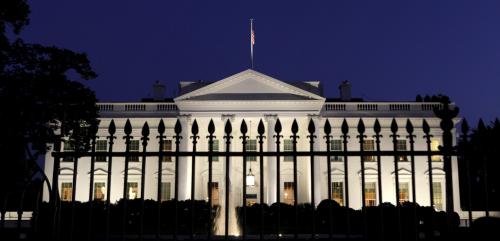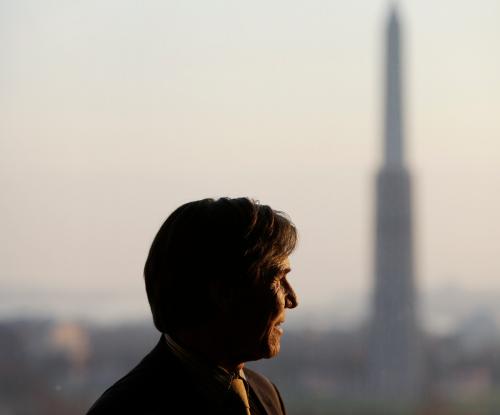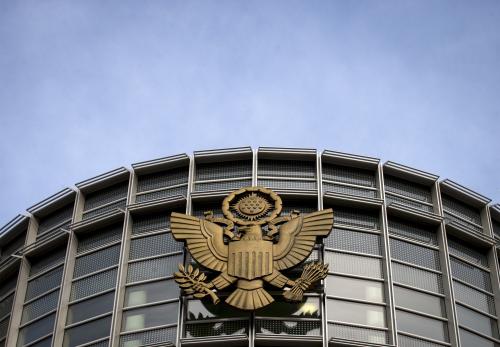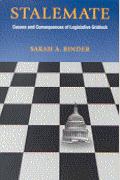Trump administration defenders say that whatever else its accomplishments, it has reshaped the federal judiciary in a little over 18 months.
Trump’s 26 court of appeals confirmations as of late August—outpacing his predecessors at this same time in their tenures—occupy 15 percent of the nation’s circuit judgeships, and that percentage can only increase. But three countervailing factors limit the impact of those appointments: First, his 26 district judge appointees constitute only 6 percent of district judgeships nationwide and lag behind his six most recent predecessors (although 75 nominees are pending, 51 of whom have had Judiciary Committee hearings and the Senate seems posed to start moving them).
Second, his circuit appointees have mainly replaced Republican appointees, and, third, they have been concentrated in courts that already had majorities of Republican appointees. (Of course, replacing a 70-year old moderate Republican appointee with a 45 year-old conservative firebrand is not an apple-for-apple trade.)
The party-of-appointing-president composition of active-status judges shifts as judges leave full-time active status and new appointees take their place. Almost all judges leave active status by retiring, with salary, either to “senior status” or to full retirement under a statutory formula involving age and years of service. Since Trump took office, 19 active-status circuit judges have retired in one form or the other, 14 of them Republican appointees. Of the 16 circuit vacancies he inherited, Republican appointees created six.
Changes nationally
Table 1 shows that on Inauguration Day, the 179 circuit judgeships were occupied by 73 Republican appointees and 90 Democratic appointees (“R-appts” and “D-appts” for short). Sixteen judgeships were vacant. Today there is an almost even split.
Eight circuit nominees are pending before the Senate. Their confirmation would shift the balance to 91 R-appts, 84 D-appts, with 4 vacancies. Assuming that all current and already-announced future vacancies without nominees get them, and the Senate confirms them (and assuming simply for analysis that no more vacancies occur), R-appts would occupy 95 seats or 53 percent of the 179 judgeships, up from 41 percent when Trump took office.
Trump’s or any president’s ability to change the party-of-appointing-president balance among judges depends in part on who leaves active status and thus creates vacancies. Most of the circuit vacancies available for Trump to fill have been created by R-appts. Of the 26 circuit judge appointments to date, 16 replaced R-appts, while 10 replaced D-appts. Of the 8 pending nominees, 6 will replace R-appts; only 2 will replace D-appts. Of the 10 judgeships that are or soon will be vacant, R-appts occupied six, D-appts four.
| Table 1: National Breakdown | ||||||
|---|---|---|---|---|---|---|
| Jan 2017 | Now | If all pending noms conf’d | If all current/ and future vacs filled | |||
| R App-D-App-Vac’s | 73-90-16 | 83-84-12 | 91-84-4 | 95-84-0 | ||
| Table 2: Breakdown by Individual Courts of Appeals | ||||||||
|---|---|---|---|---|---|---|---|---|
| Courts with more D appts than R appts | Courts with even split | Courts with more R appts than D appts | ||||||
| # | Circuits | # | Circuits | # | Circuits | |||
| Jan 2017 | NINE | 1st*, 2nd, 3rd, 4th*, 9th*, 10th. 11th*, DC*, FED* | FOUR | 5th*, 6th*, 7th*, 8th* | ||||
| Now | EIGHT | 1st*, 2nd, 3rd, 4th, 9th*, 10th., DC*, FED* | ONE | 11th | FOUR | 5th*, 6th*, 7th*, 8th* | ||
| If all current & future vacs filled | SEVEN | 1st*, 2nd, , 4th, 9th, 10th., DC, FED* | TWO | 3rd, 11th | FOUR | 5th*, 6th*, 7th*, 8th* | ||
* Indicates supermajority—at least twice as many as appointees of the other party
Changes on individual courts
Table 2 shows that the change in party-of-appointing-president composition so far has mainly—not exclusively—served to fortify Republican-appointee majorities on four courts rather than shift the balance on a large number of courts. On Inauguration Day, D-appts had majorities on nine of the 13 courts of appeals (those in the First through Fourth and Ninth through Eleventh, District of Columbia, and Federal circuits). If Trump fills all current and announced vacancies, D-appts will have majorities on seven courts and the majorities will be less robust. The large, nine-state, California-dominated Ninth Circuit, for example, which had an 18 to seven D to R appt balance on Inauguration Day, and now has 16 D-appts to 6 R-appts and 7 vacancies, could have a 16-13 division when Trump fills all current and future vacancies (assuming again, simply for analysis, that no more vacancies occur)
On Inauguration Day, R-appts outnumbered D-appts on four courts, and by large margins. Of Trumps’ 26 appointees, 16 were to one of those courts, as are four of his eight nominees awaiting confirmation. Since then, the majorities in three of the four have grown stronger. If and when Trump fills all current and announced vacancies, the four courts will have the composition of active status judges in the right-hand column of Table 3 (again, subject to further vacancies).
| Table 3 | ||||||||
|---|---|---|---|---|---|---|---|---|
| Court composition on 1/20/2017 | Court composition if Trump fills all vacancies | |||||||
| Court of Appeals for the: | States | R Appts | D Appts | Vacancies | R Appts | D Appts | ||
| Fifth Circuit | LA, MS, TX | 10 | 5 | 2 | 12 | 5 | ||
| Sixth Circuit | KY, MI, OH, TN | 11 | 5 | 0 | 11 | 5 | ||
| Seventh Circuit | IL, IN, WI | 6 | 3 | 2 | 9 | 2 | ||
| Eighth Circuit | AR, IA, MN,MO, NE, ND, SD | 8 | 1 | 2 | 10 | 1 | ||
Under the same scenario, two courts now with D-appt majorities will be evenly balanced: those in the three-state, Pennsylvania-dominated Third, and the three-state Eleventh, comprising Alabama, Florida, and Georgia. Additional vacancies could result in R appt majorities. The courts in the three-state, New York-dominated Second circuit ,and the inter-mountain west Tenth circuit will have slim one and two D-appt majorities.
Further down the road
Senate Majority Leader McConnell has made judicial confirmations, especially for the courts of appeals, a top priority, and we can presume he will continue pushing them through as long as Republicans control the White House and Senate, even if the Kavanaugh confirmation battle and Trump’s legal troubles demand Senate attention. (Of course, in the unlikely event that the Senate goes Democratic in 2019, confirmations especially of circuit nominees will likely stop, as payback for the skimpy confirmation record in the Obama administration’s final two years.)
If the confirmation juggernaut proceeds, one thing to watch is who creates vacancies to fill. As explained, the fact that R-appts have created most vacancies so far has blunted, to some degree, Trump’s and McConnell’s efforts to change the party-of-appointing-president balance on the courts of appeals.
More vacancies are inevitable. Of the 168 circuit judges in active status today, 58 appear eligible to retire or resign on full salary. The majority of them—36—are D-appts, but it is unlikely that many will leave. Of the 36, about a third have been eligible for at least 10 years, some longer, and thus, like their more recently eligible colleagues, may be in no hurry to leave full-time judging, especially if it means creating vacancies for Trump to fill. While more vacancies are inevitable, R-appts may create most of them, just as they constitute 14 of the 19 circuit judges who have retired from active service since Trump took office.
The Brookings Institution is committed to quality, independence, and impact.
We are supported by a diverse array of funders. In line with our values and policies, each Brookings publication represents the sole views of its author(s).











Commentary
Trump has reshaped the judiciary but not as much as you might think
August 27, 2018